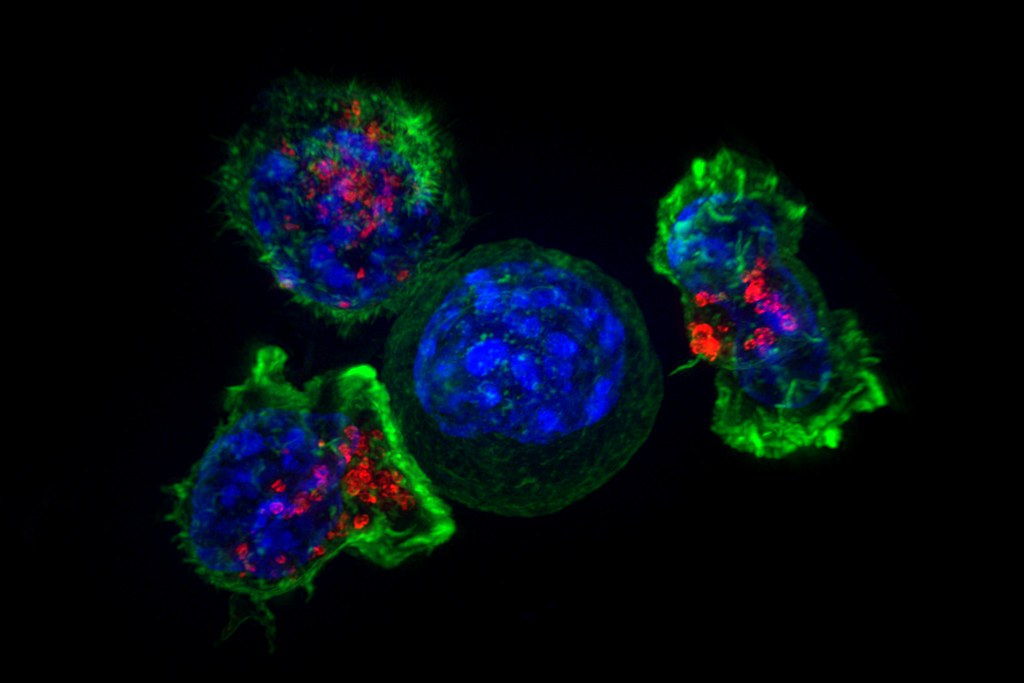Many of us know someone who has suffered from cancer and we have watched loved ones undergo the harsh treatments for it. With treatments such as chemotherapy, the side effects are hard to bear. So, what if your body could be taught to treat cancer on its own without having to experience the hair loss, fatigue, nausea, and anemia that external treatments can cause.
Cancer cells are very different from normal cells as they hide from the immune system which usually eliminates damaged or abnormal cells. Cancer cells also trick the immune system to help cancerous cells stay alive and grow. But, what if these cancer cells could be altered to teach the body’s immune system to fight the cancer that the cells come from?
In an experiment done by Stanford Medicine researchers used mouse leukemia cells to train T cells to recognize cancer in a way that could mimic the natural occurrence in the body, similar to vaccines. T cells recognize pathogens due to special antigen presenting cells (APCs) gathering pieces of the pathogen to show to the T cells what to attack. In cancer, the APCs would gather up the many antigens that characterize a cancer cell so T cells could be trained to recognize cancer antigens and wage a multi-pronged attack on the cancer.
The researchers programmed mouse leukemia cells to be induced to transform themselves into APCs. When they tested the cancer vaccine strategy on the mouse immune system, the mice were able to clear the cancer. The immune system was able to remember what the cells had taught them and when they reintroduced cancer to the mice 100 days they were able to have a strong immunological response to protect them. Additionally, they tried to see if the tactic used with leukemia would work with solid tumors so they used the same approach by using mice fibrosarcoma, breast cancer, and bone cancer. They found that the solid tumor transformation was not as efficient to that of leukemia, but it still had a positive result. With all three cancers, there was significantly improved survival rates.
They then went back to leukemia, but this time they studied acute leukemia in human cells. When the human leukemia cells APCs were exposed to human T cells from the same patient, they observed all of the signs that indicated the APCs were teaching the T cells how to attacked the leukemia.
This relates to what we have learned in AP Biology because we learned about cell division and how cancer differs from normal cell division. Cancer is a disease where some of the body’s cells divide and grow uncontrollably. This can start anywhere but also spread to other parts of the body very quickly. In its normal process, human cells grow and multiply through interphase and mitosis to form new cells as the body needs. Interphase is the phase in the cell cycle that prepares for cell division by growing cells and undergoing the process of DNA replication. The body has checkpoints that regulate the G1, S, and G2, phases of interphase. There are also checkpoints for mitosis, which is the division of cells that results in two daughter cells. When the cells become old or damaged, they die and new cells are regenerated. When this process breaks down and abnormal or damaged cells grow and multiply when they’re not supposed to, the body goes through a process called metastasis where cancerous tumors are formed. Cancer cells ignore the checkpoints and continue to divide and multiply.
This research has introduced a new way that could eventually treat cancer in a more harmless way while also ensuring that the body can fight off recurrence. So do you think that this will be the new treatment for cancer?




Leave a Reply